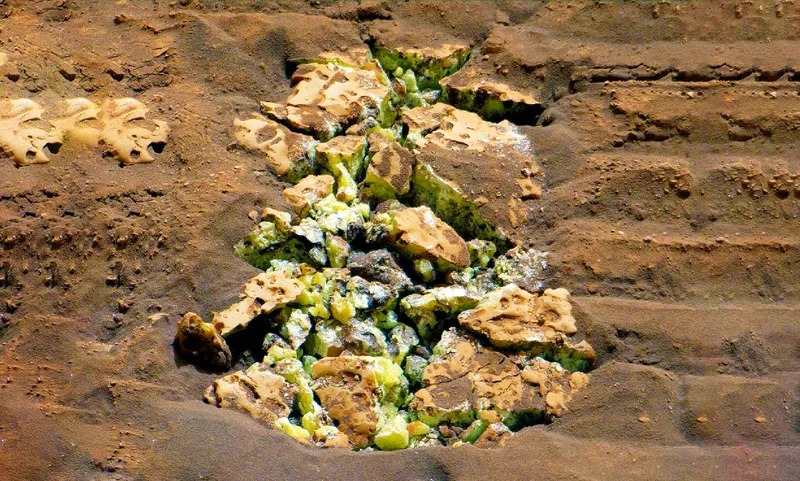Yellow Crystals on the Red Planet: Curiosity Rover Gets Scientists Curious!
NASA's Curiosity Rover discovered bright yellow sulfur crystals on Mars, hinting at ancient hydrothermal activity and enriching our understanding of the planet's dynamic history.
NASA's Curiosity Rover has once again made headlines, this time by uncovering bright yellow crystals on Mars, a discovery that's causing quite a buzz in the scientific community. These yellow crystals, identified as elemental sulfur, were revealed when the rover inadvertently drove over a rock, splitting it open and exposing the hidden treasure within.
The Discovery
On May 30, 2024, while exploring the Gediz Vallis channel, Curiosity encountered a rock that, when cracked open, revealed something unprecedented: yellow sulfur crystals. This discovery is particularly exciting because, while sulfur-based minerals have been found on Mars before, this is the first time pure elemental sulfur has been observed on the planet.

Elemental sulfur, on Earth, is typically associated with volcanic and hydrothermal processes. Its presence on Mars adds a new layer to our understanding of the planet's geological history. Scientists are now investigating the exact processes that might have led to the formation of these sulfur crystals on Mars. The discovery was made using Curiosity's Mast Camera (Mastcam), which captured detailed images of the crystals.
Geological Significance
This find is not just a geological curiosity but a significant clue in the ongoing exploration of Mars's past. Sulfur minerals often form in water-rich environments, and their presence could indicate past hydrothermal activity on Mars. This further supports the hypothesis that Mars had a more dynamic and possibly habitable environment in its distant past.
The Gediz Vallis channel, where the crystals were found, has been a focal point for scientists studying Mars. The area shows evidence of ancient water flows and landslides, suggesting a history of significant geological activity. These yellow sulfur crystals add to the growing body of evidence that Mars had a more complex and active geological history than previously thought.
The Rover's Role
Curiosity, launched by NASA in 2011, has been a tireless explorer of the Martian surface, providing invaluable data that has transformed our understanding of the Red Planet. The rover's suite of scientific instruments, including the powerful drill on its robotic arm, allows it to analyse rock samples in detail. This latest discovery is a testament to the rover's capabilities and the importance of continued exploration.
As scientists continue to analyse the sulfur crystals and the surrounding area, they hope to uncover more about Mars' geological past and its potential to have supported life. Each discovery by Curiosity brings us closer to answering fundamental questions about the Red Planet. The quest to understand Mars is far from over, and with each new find, our curiosity only grows.
In the spirit of exploration, let's keep our eyes on the skies and our minds open to the wonders that Mars and the rest of our solar system have to offer. After all, when it comes to space exploration, the sky isn't the limit—it's just the beginning.
Edited by Rahul Bansal







